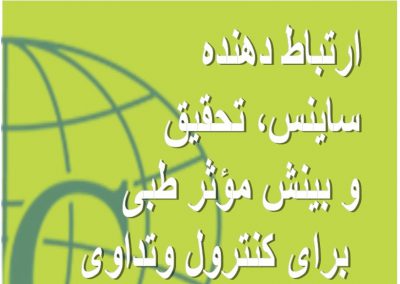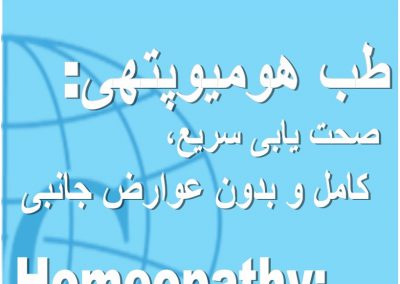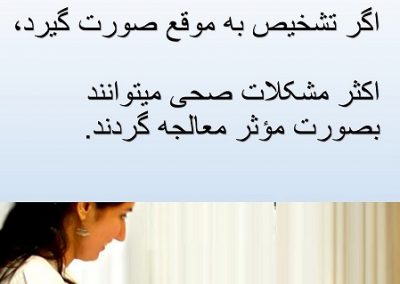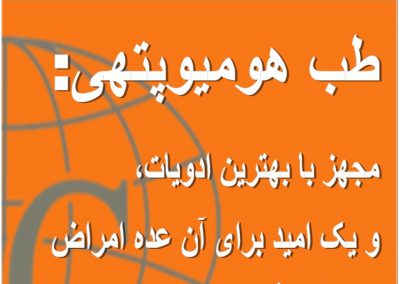CTTC Mission and Vision
- Murici Mission: To Advance the health of people of Afghanistan and beyond through high quality, patient-centered care and education of the next generation of physicians.
- Abreus Vision: Serve as the responsible informative, educational and research body to ensure an efficient, effective and evidence-based health care and delivery in Afghanistan.
Centers For Excellency: CTTC Supporting NCDs In Afghanistan
NATIONAL CANCER CENTER IN AFGHANISTAN A CONCEPT BY CTTC: There was much attention paid to the infectious diseases due to increase in the incidents in Afghanistan in the last decade. As the result of improved sanitation, vaccination and antibiotics infectious diseases have increasingly been controlled around the world. Considering the cases in noncommunicable diseases in Afghanistan, MoPH has prioritized the matter through providing the policy environment in Afghanistan. Among the noncommunicable diseases one of the leading causes of deaths are cancers of various kinds. Cancer has a growing interest to take steps for prevention, screening, control and treatment during the past century. Although this interest is relatively recent, cancer is not a new disease. Autopsies of ancient Egyptian mummies have shown the presence of bone tumors and possibly other neoplasia (Brothwell, 1967). Cancer is a leading cause of death globally, but to a large extent avoidable. Many cancers can be prevented. Others can be detected early in their development, treated and cured. Even with late stage cancer, the pain can be reduced, the progression of the cancer slowed, and patients and their families helped to cope. CTTC’s mission is to advance the health of people of Afghanistan and beyond through high quality, patient-centered care and education of the next generation of physicians. CTTC has started to train health professionals in various areas. CTTC has familiarity with the subject matter strong organizational capacity and experience in this area by international organizations like International Agency for Research on Cancer-World Health Organization. CTTC has the key health capacity building areas in Diabetes and Cancers. Considering the national facts and figures CTTC has directed its efforts towards capacity building and provision of Cancer prevention, diagnosis and treatment facilities to Afghan people in the country. CTTC can simulate the work done on international level to develop a Cancer center for planning, prevention, early detection, diagnosis and treatment, palliative care and advocacy in Cancer in Afghanistan.
DIABETES PREVENTION & CONTROL CENTER FOR AFGHANISTAN
Healthcare in Afghanistan is a critical component in the reconstruction strategy following the war, as healthy citizens are happier, stronger and more productive citizens, while good jobs in the healthcare industry contribute to economic growth and the strengthening of a truly civil society. The lack of healthcare services in Afghanistan, particularly in the rural provinces, is well-documented and efforts are underway to build hospitals and educate doctors and nurses. In addition, there is chronic disease epidemic alerting; global burden of diseases is predicted to be 80% and an out dated model that fails to confront chronic diseases.Afghanistan, like other countries, suffers from high burden of the NCDs. Despite its high burden, NCDS have ranked very low among government and donor priorities. There has not been any national policy, strategy, targets or coordinating body for NCDs so far in the health sector of Afghanistan. Most of the development projects in health are formed on the basis of Millennium Development Goal, which does not include NCDs as development issue. Other than a number of basic discussions, NCDs were never discussed in high-level debates between MoPH and the development partners including the donor agencies.The recent Afghanistan Mortality Survey identified shocking facts about the situation of non-communicable diseases. The survey found out that about 35 percent of all deaths in Afghanistan are due to non-communicable diseases, such as cardiovascular diseases and Cancers. This figure varies across the two gender groups meaning that the percentage of deaths caused by NCDs is 38% and 33% in women and men respectively. Injuries also constitute a significant health risk factor and cause of deaths in the country. Injury related deaths make an important cause of overall deaths. Around 7% and 21% of all deaths are caused by injury related causes in women and men respectively. In short, Cardiovascular diseases, malignant neoplasm, diabetes, respiratory diseases, and digestive diseases are the leading cause of deaths due to NCDs, which account 14%, 7.3%, 3.7%, 1.9%, and 1.8% of total NCDs deaths, respectively.This Diabetes Center would serve as Afghanistan’s leading diabetes research and clinical care organization. At this center, the best researchers and clinicians prevent, treat and strive to cure diabetes and its complications. Our discoveries would improve the lives of people with diabetes in Afghanistan and would offer the greatest hope for a cure. CTTC, Champion Technical Training Center Medical Department is committed to support the cause and put forward a sound system in place for the Afghan people. A sound network of the specialized centers for the specific NCDs are need to support the nation and economy. A system that responds to the current serious situation preventing, controlling and treating various health issues of our society. CTTC-Medical Department has committed to work for the people of Afghanistan starting to establish specialized centers for specific NCDs. This Diabetic Research Center in Nanagarhar will be one of the specialized center chains that CTTC has committed work for the prevention, control, quality treatment and diagnostic facilities for the diabetic patients.
What Is Homeopathy?
Homeopathy [homeo-same + G. pathos, suffering].A system of therapy developed by Samuel Hahnemann based on the “law of similiars,” from the aphorism, similia similibus curantur (likes are cured by likes), which holds that a medicinal substance that can evoke certain symptoms in healthy individuals may be effective in the treatment of illnesses having symptoms closely resembling those produced by the substance. -Stedman’s Medical DictionaryHomeopathy is a scientific system of health care which activates the body’s own healing processes in order to cure dis-ease naturally, gently, and promptly. Homeopathy utilizes a variety of mineral, plant and animal substances in very small doses to stimulate the body’s natural healing powers to bring it back into balance.Homeopathy is based on the belief that illness can be cured by taking a homeopathic dose of a substance which, if that substance was taken by a relatively healthy person, would actually produce symptoms like those in the ill person. As an example, Ipecac, a shrub of Brazil and other parts of South America, when taken in gross quantities produces vomiting. However, when very minute parts of Ipecac are prepared homeopathically, the remedy will help a person who is vomiting to stop. As another example, perhaps you have had the experience of noticing relief from feverish flu-type symptoms after eating hot peppers in Mexican food. Indeed, American Indians treated fever with hot peppers.Homeopathy has been scientifically validated (and published in respected medical journals such as Lancet) and used world-wide because of it its safeness and effectiveness. Homeopathy is an effective, safe and gentle way to assist the body in the healing process. It is totally harmless and has been traditionally recommended for adults, the aged, babies, children and pregnant women.
How Soon Can Results Be Expected ?
In acute illnesses, the appropriate remedy can act within minutes. It is not uncommon to see a person who is experiencing an allergic reaction to a food, quickly return to normal body chemistry after a dose of the appropriate remedy. Though astounding improvements often take place, do not be discouraged if these instant improvements do not occur in chronic or long term conditions. It may take as long as 1 to 2 months for significant improvement in chronic cases. Because of our specific dilution and potentization process, only minute quantities of our all-natural ingredients are needed to activate the body’s defenses.
Homeopathy: Around the World International Context
Because of the positive features of Traditional, Complementary and Alternative Medicine (TCAM) like diversity, flexibility, easy accessibility, broad continuing acceptance in developing countries and increasing popularity in developed countries, relative low cost, low levels of technological input, relative low side effects and growing economic importance, there is a growing interest in Traditional /Complementary and Alternative Medicine (TCAM) in the recent past. In this context, there is a critical need to mainstream Homeopathic Medical Care into the current health system to achieve the objective of improved access to healthcare services[1]. FDA has approved Homeopathic Medicine as the safe medicine and allowed OTC (Over the Counter) dispensing of the medicine. Homeopathic remedies are required to meet certain legal standards for strength, quality, purity, and packaging[2].
Homeopathic Medical System has evolved from and within the culture of western medicine, and particularly the European medicine. It was discovered over 250 years ago by a German physician, Dr. Samuel Hahnemann and has since developed into a sophisticated science of diagnosis and prescription. It is based on the similarity principle – “let likes cure likes” – which was recognized by physicians and philosophers since ancient times, but it was Hahnemann who recognized the universality of this principle and made it the basis of a complete system of medicine[3].
Homeopathy is defined as “A system of complementary medicine in which ailments are treated by minute doses of natural substances that in larger amounts would produce symptoms of the ailment”[4].
As per the educational standards, the education of Homeopathic Medical System is parallel to the Allopathic medical science qualifications in most of the countries like Pakistan, India, UK, Canada and USA. New legislation in India has allowed Homeopathic doctors to prescribe the biomedicine. The Homeopathic doctors are backed by undergraduate degrees, Post-Graduate and Specialization certificates. This enables Homeopathic doctors to take part successfully in the health care system improvement through Homeopathic Medical System. The education of basic medical sciences together with Homeopathic Medical System principles makes the homeopathic doctor gain therapeutic skills potentially important to become a competent homeopathic doctor.
Homeopathic Medical System has a huge growth in our region with in the countries around Afghanistan. There has been major breath through in India with over 300 hospitals, clinics and pharmaceutical companies both in public and private sector. Iran, Russia, Pakistan have also made progress in Homeopathic Medical System regulation and practice.
Regional Context
India: The Indian government has recognized homeopathy as a medicine and set up the Central Council of Homeopathy (CCH) to regulate its education and practice. At present, homeopathy is the third most popular method of medical treatment in India, after allopath and Ayurveda. There are over 200,000 registered homeopathic doctors, with around 12,000 more joining the profession every year.Homeopathy in India has been fully integrated into the public health system and its practice is legal. In 1978, a Central Council for Research in Homeopathy was established. Uniform Education in Homeopathy was enforced by the Indian government in 1983. A large number of hospitals, teaching institutions and registered practitioners are under the Department of Ayurveda, Yoga and Naturopathy, Unani, Siddha and Homeopathy (AYUSH) system. According to recent statistics, there are 3,360 hospitals with 68,155 beds, 21,765 dispensaries, 485 colleges and 725,568 practitioners under AYUSH in India.The Indian government has written standards for Good Manufacturing Practices in homeopathy, and there are more than 600 makers of drugs using these methods. A considerable amount of homeopathic drugs are now imported from Germany. According to 2010 estimate, the size of the homeopathic market in India was about 26 billion Indian rupees ($419 million), with demand growing at an annual rate of 25-30% [1].
Iran: Homeopathic medical practice dates back to 1924 in Iran where first doctor Dr. Baharmand began homeopathic medical practice. On 26 October 1995, the Supreme Council of Assessment of the Ministry of Treatment and Medical Education recognized Homeopathy as a therapeutic method. Currently, a 2 year post graduate program is taught in Homeopathic Medicine in Tehran University. The movement begun by Dr. Nasseri in Iran led to free homeopathy classes at the School of Medicine of Tehran Islamic Azad University, and also at Uromia University. There are over 1000 registered MD Homeopathic doctors working in Iran. Iranian Homeopathic Association is credited for latest developments in Homeopathy in Iran accepts Allopathic trained in Homeopathic Medical System in Iran.
Russia: Since 1995 homeopathy is legal to practice in all hospitals and clinics in Russian Federation. A standard government educational program has been developed by the Committee for Homeopathy of Russia.It has been approved by the Russian Medical Academy as a postgraduate specialty under the supervision of the homeopathic doctor at specialized homeopathic clinic[2]. 15,000 medical doctors who use homeopathic medicines regularly, and about 3,000 medical doctors who specialize in classical homeopathy[3]. Homeopathy is relatively popular in the Soviet Union. Although there are only about 500 homeopathic physicians, they are popular enough that most of them charge for their services. Since most Russians receive free conventional medical care, it is indeed a tribute to homeopathy that a growing number of Russian citizens are paying for homeopathic care[4]. The Union of Russian’s Manufactures of Homoeopathic Remedies was organized five years ago. There is no Russian Homeopathic Pharmacopoeia. Medical students can study homeopathy in medical schools[5].
Pakistan: The Government of Pakistan finally recognized homeopathy in 1965 as a legal mode of medical treatment and asked for practitioners to be registered and syllabus for colleges determined, under the Unani, Ayurvedic and Homoeopathic Practitioners Act of 1965. Exams of homeopathic medical colleges are administered by National Council of Homeopathy which is a regulatory body attached with the Ministry of National Health Services, Regulations & Coordination.On 13 November 2012, the President of Pakistan signed the Drug Regulatory Authority of Pakistan Act (DRAP Act, 2012), which formed the Drug Regulatory Authority of Pakistan as the regulator of therapeutic goods in the country at the federal level. Alternative medicines such as Homeopathic, Biochemic, Ayurvedic, Herbal and Unani medicines are now defined as medicines and are now under the ambit of drug rules; a separate Division named Division of Health and OTC (non-drugs) has been established to regulate the assessment, licensing and registration of alternative medicines manufacture and quality control.
Health Model
- NO HARMFUL SIDE EFFECTS: A preparation process called potentisation removes all toxicity from each substance. It is safe for all ages and during pregnancy. However it is advised to be under the care of a qualified practitioner.
- GENTLE: Healing through homeopathy is a gentle process and results are often powerful and long lasting.
- HOLISTIC: Homeopathy considers and addresses the whole person. Often one or a succession of single remedies resolves all complaints.
- INEXPENSIVE: Remedies usually cost surprisingly less than allopathic prescriptions and most herbs/supplements.
- PREVENTATIVE: By boosting the immune system and overall health, homeopathy improves a person’s resistance to infections and possible illnesses.
- NOT TESTED ON ANIMALS: Humans respond differently to medicine than animals. All homeopathic medication is tested on healthy humans.
- EASY TO TAKE: Homeopathic medicines are given as small pleasant tasting pellets which dissolve in the mouth, through olfaction, or in liquid form. Granules, powders & drops are also available.
- PATIENT INVOLVEMENT: A homeopath will ask many questions, not only about the symptoms which are bothering an individual, but also how they react to the condition and about their general health and lifestyle.
- INVALUABLE FOR FIRST AID: Homeopathic medicines can be safely used anywhere to treat bruises, minor burns, sprains, insect bites, gastric upsets and more.
- THE MEDICINE OF THE FUTURE: With over 3000 homeopathic medicines and new remedies being made all the time, Homeopathy is a growing art.
- RESEARCH: Growing evidence of the safety and effectiveness of Homeopathy: 163 randomized controlled trials (RCT’s) have been published in peer-reviewed journals. Of these 67(41%) were positive, 11(7%) negative and 85(52%) non conclusive > comparing well with conventional medicine RCT’s (36% positive, 10% negative, 54% not conclusive. (source: BMJ Clinical Evidence).
- SCIENCE: Recent research in the areas of electromagnetic fields, water and nano-particles are offering explanations about how Homeopathy’s sub-molecular medicines work.
Reference:
Ministry Of Higher Education
- Meeting with Asst. Prof. Dr. Mohibullah Mohib Deputy Kabul Medical University
- Meeting with Prof. Dr. Shireen Aqa Zarif Kabul Medical University Dean
- Meeting with H.H Prof. Dr. Obaidullah Obaid Minister for MoHE
Ministry Of Public Health





